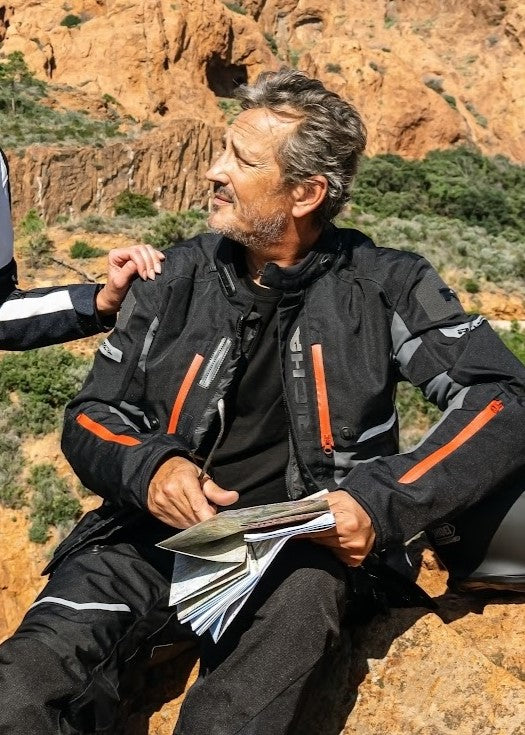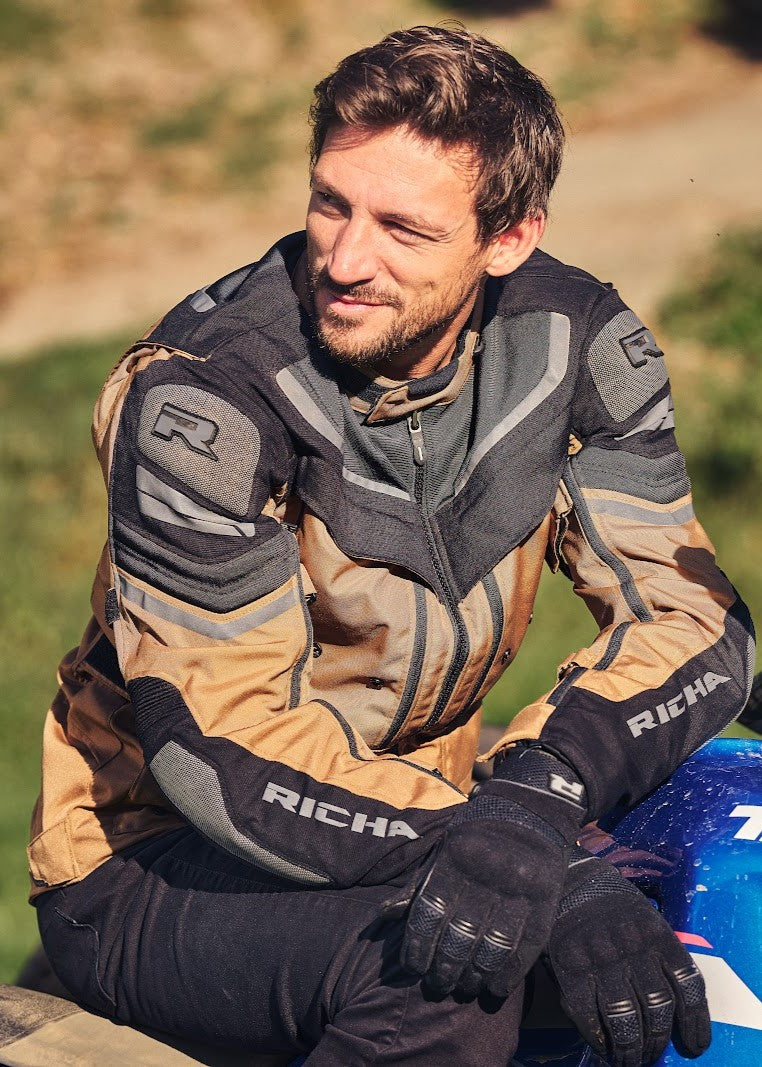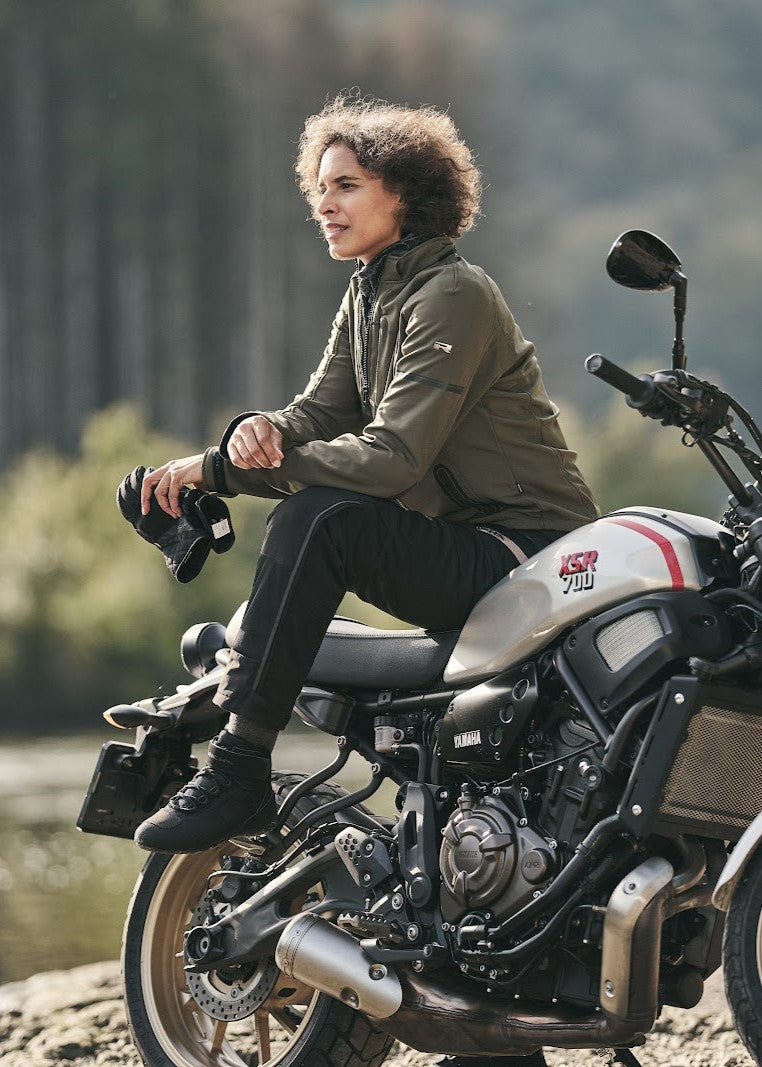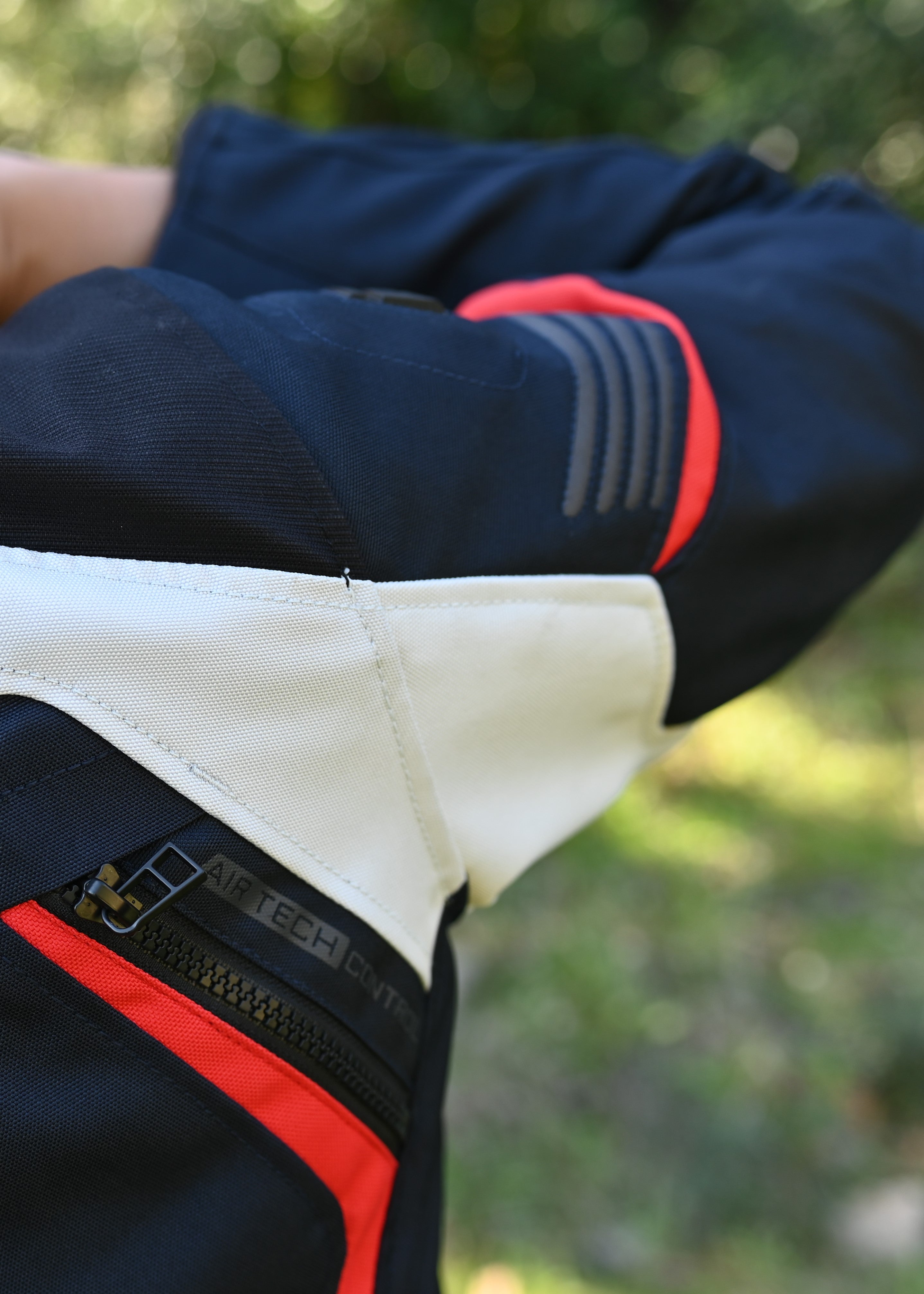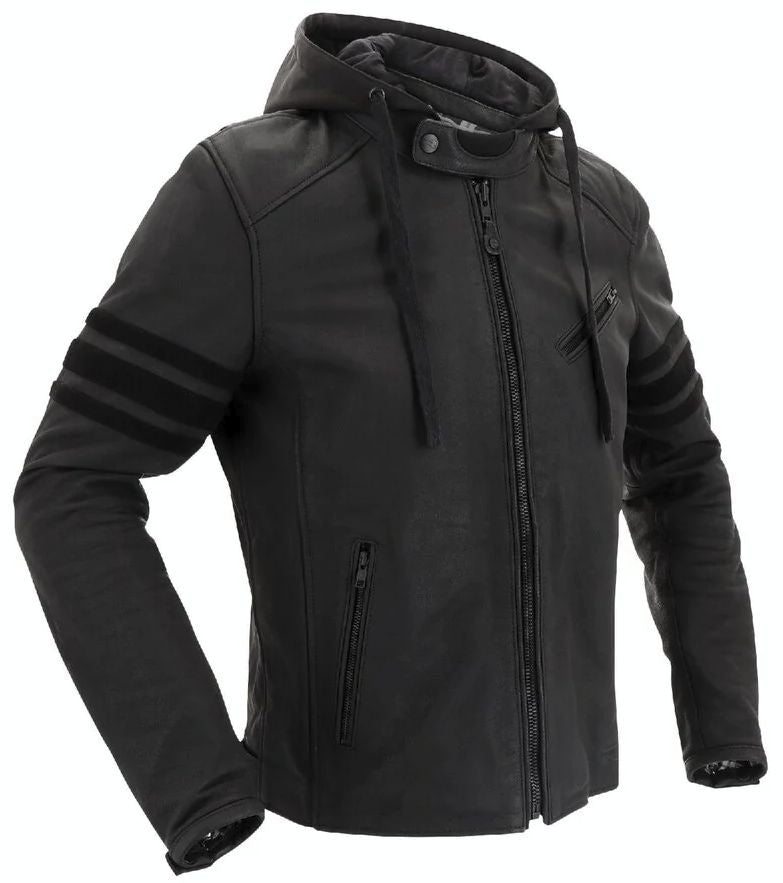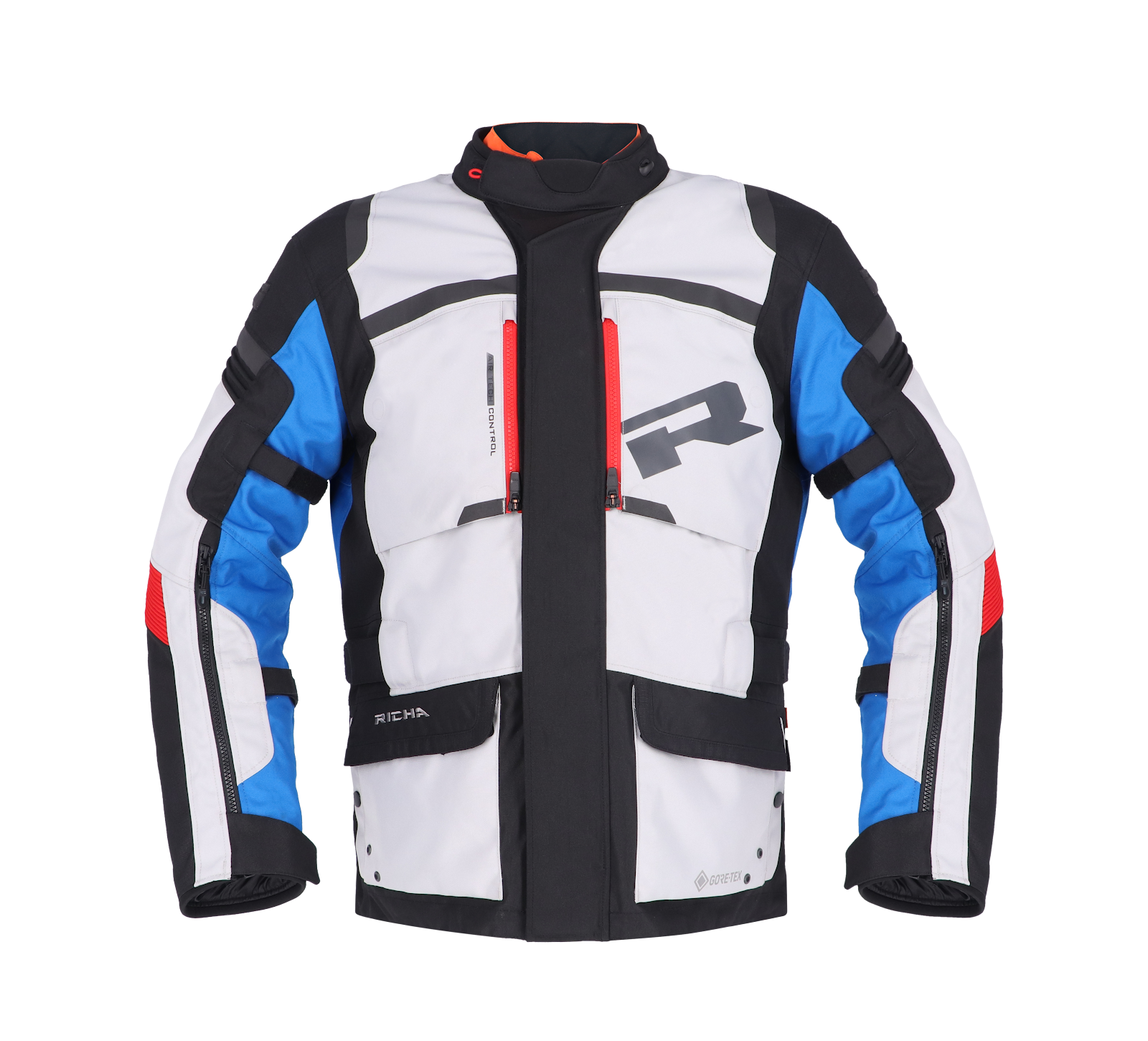
CE Rated Motorcycle Armor: What You Need to Know
Riding a motorcycle comes with inherent risks. Protective gear is essential, and CE-rated motorcycle armor is a critical component. Understanding CE ratings can help you choose gear that provides optimal protection. Let’s break down what CE-rated motorcycle armor is, why it matters, and how to choose the right armor for your needs.
Here at Richa we run the famous and top-rated D3O brand in just about every item, including our sneakers.
What is CE Rated Motorcycle Armor?
CE stands for Conformité Européenne (European Conformity), a certification mark indicating that a product meets the safety, health, and environmental protection standards set by the European Union. CE ratings ensure that protective gear, such as shoulder, elbow, knee, back, and chest protectors, meets specific performance criteria for impact resistance, durability, and fit.
CE-rated armor is typically integrated into motorcycle jackets, pants, suits, or worn as standalone pieces. Depending upon brand, it’s made from materials like high-density foam, hard plastics, or advanced composites designed to absorb and disperse impact energy during a crash.
Why CE Ratings Matter
Motorcycle armor without a CE rating may not provide reliable protection. CE certification ensures that the gear has been rigorously tested for:
- Impact Absorption: The armor’s ability to reduce the force transmitted to your body during a crash.
- Coverage Area: Ensuring the armor protects critical areas like joints or the spine.
- Ergonomics: The armor must fit comfortably and stay in place during movement.
- Durability: Resistance to wear, tear, and environmental factors like heat or abrasion.
By choosing CE-rated armor, you’re investing in gear that has been independently verified to enhance your safety, giving you peace of mind on the road.

Understanding CE Rating Levels
CE ratings for motorcycle armor are divided into two main standards: EN 1621-1 (for limb protectors) and EN 1621-2 (for back protectors). These standards include different levels of protection, primarily Level 1 and Level 2, based on the amount of force transmitted during impact tests.
CE Level 1 vs. Level 2
- Level 1: Offers adequate protection for lower-risk scenarios, such as urban riding. In testing, Level 1 armor allows up to 35 kN (kilonewtons) of force to be transmitted to the body. It’s lighter and more flexible, making it comfortable for casual or warm-weather riding.
- Level 2: Provides higher protection for high-risk scenarios, such as high-speed or track riding. Level 2 armor allows only up to 20 kN of force to be transmitted. It’s typically thicker and more rigid but offers superior impact absorption.
For example:
- EN 1621-1 applies to shoulder, elbow, hip, and knee protectors. Level 2 armor in these areas is ideal for aggressive riders or those riding in demanding conditions.
- EN 1621-2 applies to back protectors. A Level 2 back protector is highly recommended for long-distance or high-speed riding due to its enhanced spinal protection.
Some armor, like chest protectors, may fall under other standards, such as EN 1621-3, with similar Level 1 and Level 2 distinctions.
Types of CE-Rated Motorcycle Armor
CE-rated armor comes in various forms to protect different parts of the body. Here’s a breakdown of the most common types:
- Shoulder and Elbow Protectors: Integrated into jackets, these protect vulnerable joints during a slide or impact. Look for armor that contours to your body for comfort and mobility.
- Knee and Shin Protectors: Found in riding pants or standalone knee guards, these shield your lower limbs, which are prone to injury in a crash.
- Back Protectors: These cover the spine and are available as inserts for jackets or standalone units. A CE Level 2 back protector is highly recommended for maximum safety.
- Chest Protectors: Often used in adventure or motocross riding, these protect the ribcage and vital organs. Some jackets include dual-piece chest armor for better coverage.
- Hip Protectors: Integrated into riding pants, these cushion the hips, which are susceptible to fractures in a fall.
How to Choose the Right CE-Rated Armor
Selecting the right CE-rated armor depends on your riding style, environment, and comfort preferences. Here are some tips to guide your decision:
- Assess Your Riding Style:
- Urban/Commuter Riders: Level 1 armor may suffice for short, low-speed rides.
- Sport or Touring Riders: Opt for Level 2 armor, especially for back and chest protectors, due to higher speeds and longer distances.
- Off-Road/Adventure Riders: Consider armor with greater coverage and flexibility to handle varied terrain.
- Check Fit and Comfort:
- Armor should fit snugly without restricting movement. Poorly fitting armor can shift during a crash, reducing its effectiveness.
- Try on gear with armor inserted to ensure it aligns with your body’s contours. Some apparel allows varying the positioning of the protectors within the garment.
- Look for Certification Labels:
- Genuine CE-rated armor will have a label or tag indicating the standard (e.g., EN 1621-1 or EN 1621-2) and level (1 or 2). Avoid gear with vague claims like “impact-resistant” without CE certification.
- Consider Climate and Ventilation:
- In hot climates, look for armor with breathable materials or perforations to stay cool.
- For cold-weather riding, ensure the armor integrates well with insulated gear.
- Combine with Other Gear:
- CE-rated armor works best when paired with abrasion-resistant materials like leather or textile jackets/pants with Kevlar reinforcements.
- Always wear a CE-approved (DOT approved n the US) helmet and gloves for comprehensive protection.

Maintenance and Replacement
To ensure your CE-rated armor remains effective:
- Inspect for Damage: Check for cracks, tears, or deformation after a crash or heavy use. Damaged armor should be replaced immediately.
- Replace Periodically: Even without visible damage, armor can degrade over time due to UV exposure or material fatigue. Replace every 3–5 years, depending on usage and manufacturer guidelines.
Common Misconceptions About CE-Rated Armor
-
Myth: “All motorcycle gear is CE-rated.”
Fact: Not all gear meets CE standards. Always check for the CE label and specific standard (e.g., EN 1621-1). -
Myth: “Level 1 armor is unsafe.”
Fact: Level 1 armor is still rigorously tested and suitable for low-risk riding scenarios.
Conclusion
CE-rated motorcycle armor is a vital investment for any rider serious about safety. By understanding the differences between Level 1 and Level 2, choosing the right type for your riding style, and maintaining your gear, you can ride with confidence knowing you’re well-protected. Always prioritize CE-certified gear, check for proper fit, and pair it with other high-quality protective equipment. Stay safe and enjoy the ride!
Most motorcycle apparel has armor included. Make sure the brand you buy respects you enough to include the best. Like D30 brand in all Richa apparel.
If you found this article helpful, stay tuned for our follow up blog called “Battle of the Bike Armor: D3O vs. Sas-Tec and Other Leading Motorcycle Protectors.”

